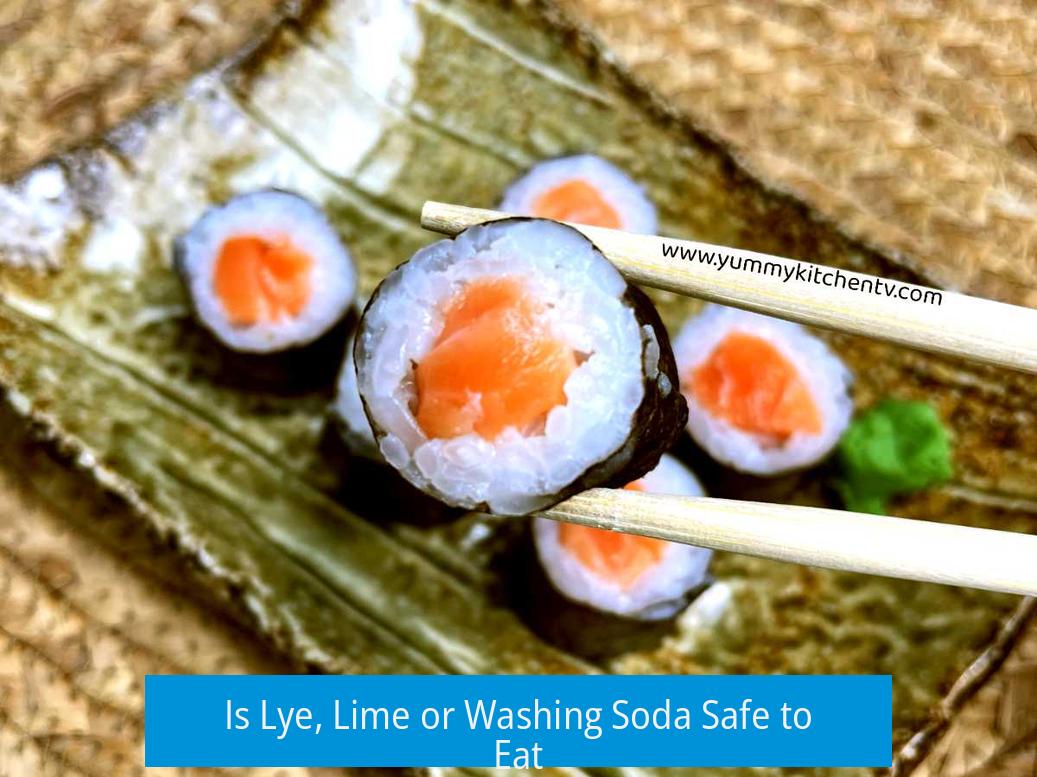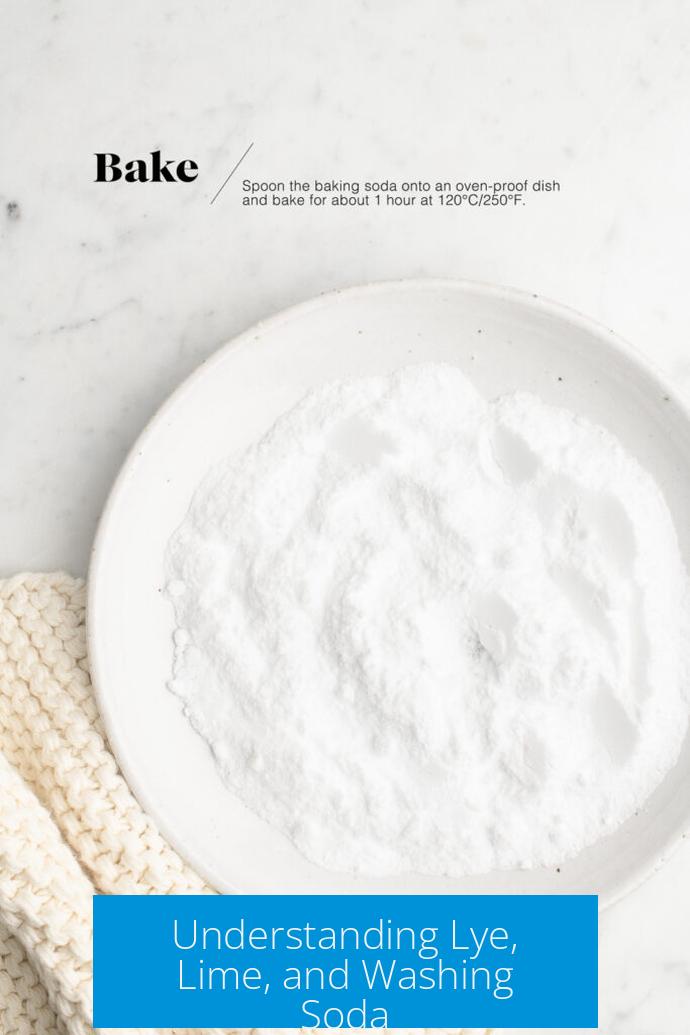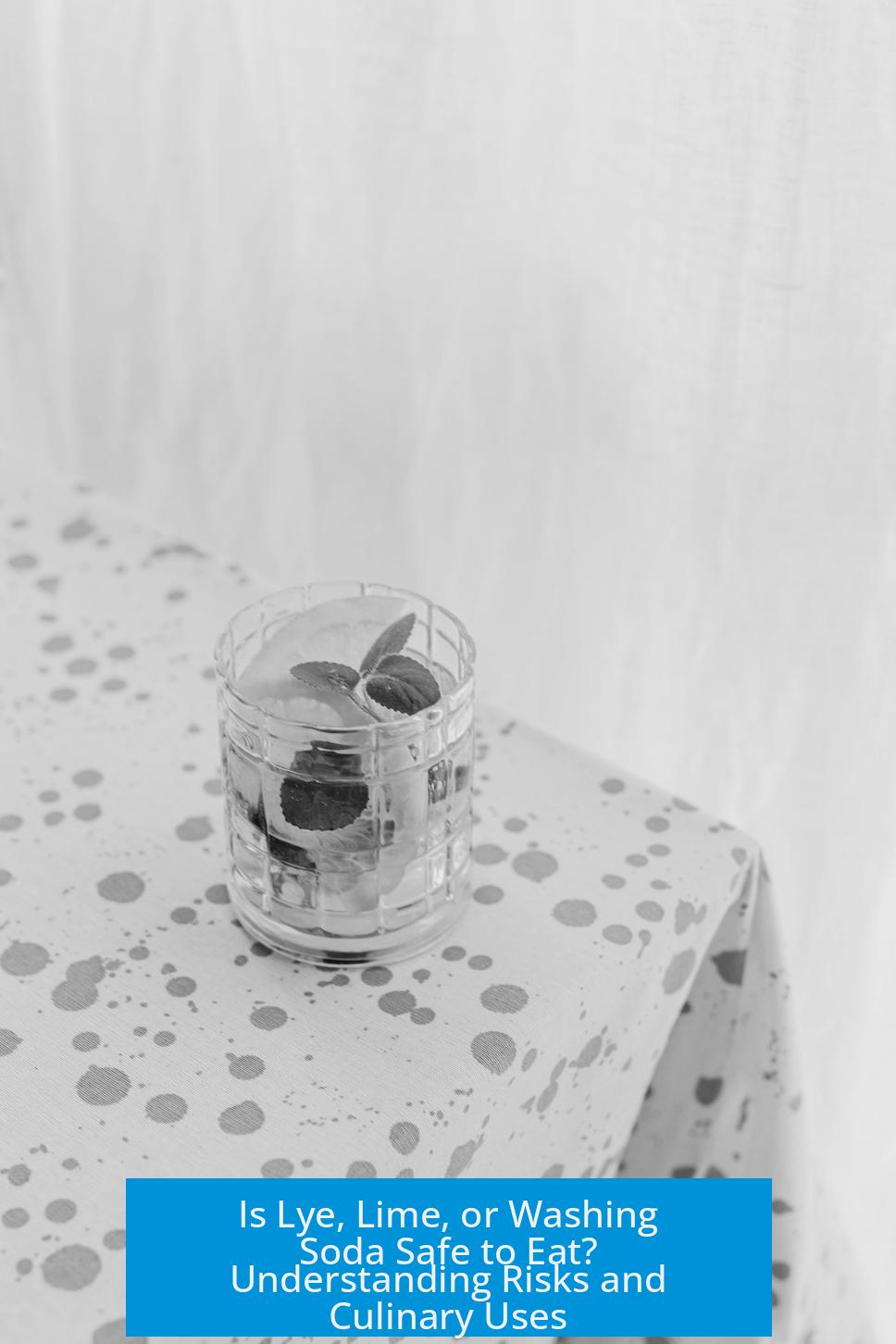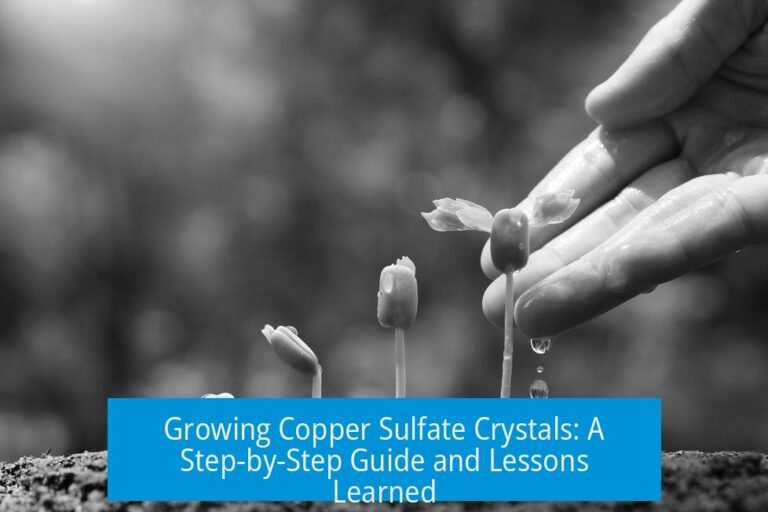Is Lye, Lime or Washing Soda Safe to Eat?

Lye, lime, and washing soda are not safe to eat in their pure forms due to their high alkalinity and corrosive nature. However, when used properly in culinary processes, they react with food components and water, rendering themselves safe as they transform into non-toxic substances. This transformation, along with proper dilution and use of food-grade materials, ensures safety in traditional food preparations.
Understanding Lye, Lime, and Washing Soda

Lye (sodium hydroxide), lime (calcium hydroxide), and washing soda (sodium carbonate) share a common characteristic: a high pH. This alkalinity makes them corrosive to biological tissues. The mechanism of their hazard lies in their ability to denature proteins and saponify lipids on contact, causing chemical burns and tissue damage.
The key safety concern with these chemicals is their strong alkaline nature, not the chemicals themselves in benign forms. When diluted or chemically reacted in food preparation, they become harmless.

High pH and Corrosiveness
- These chemicals have pH values often above 11, making them caustic.
- The corrosiveness stems from the chemical reaction with organic tissues, leading to protein denaturation and fat saponification.
- This action damages living tissues but is neutralized when these chemicals are used in controlled culinary settings.
Culinary Uses of Lye, Lime, and Washing Soda
Sodium Hydroxide (Lye)
Sodium hydroxide, commonly called lye, finds several culinary applications:
- It adjusts pH in acidic foods such as tomato sauce, balancing acidity.
- Hot lye solutions help peel skins rapidly from potatoes and tomatoes.
- Pretzels acquire their characteristic crust and deep brown color through dipping in dilute lye solutions (~1–3% NaOH) before baking. This high pH promotes Maillard browning reactions on the dough’s surface.
- Lye in small amounts (e.g., 100 mg in 2 liters of water) softens the shell, making freshly laid eggs easier to peel after boiling.
Sodium Carbonate (Washing Soda)
Sodium carbonate is an alkaline compound used in food processing:
- Essential in making some Asian noodles like ramen, where it modifies texture and chewiness.
- Pretzels and some other baked goods can use washing soda solutions as an alternative to lye for surface alkalinity.
- Its alkalinity aids in browning and texture development without residual toxicity.
Calcium Hydroxide (Lime)
Calcium hydroxide is crucial in traditional food preparations:
- Nixtamalization involves cooking corn in lime water to convert it into hominy, which is softer and nutritionally enhanced. The corn can be eaten whole or ground into masa for tortillas and tamales.
- Lime water is used to pickle vegetables, helping maintain crispness.
- It is used industrially in sugar production to purify juice, although it does not remain in the final sugar product.
Safety Considerations in Culinary Use
Dilution and Neutralization
Pure lye, lime, or washing soda are highly alkaline and dangerous if ingested directly. Dilution is critical to safety. Culinary preparations use dilute solutions that interact with food components and moisture, neutralizing harmful alkalinity.
For example, pretzels are dipped in approximately 1% lye solution for only about 10 seconds. During baking, the lye reacts with carbon dioxide and moisture to form sodium carbonate, a benign substance.
Food Grade Importance
Only food-grade lye and lime should be used in cooking. Commercially available industrial grades may contain impurities, including heavy metals, posing health risks.
Food-grade lye ensures purity and safety when handled properly in recipes. The concentrated forms remain hazardous but are safe in low concentrations and when reacted fully during cooking.
Transformation During Cooking
- Lye reacts with amino acids in foods to form sodium salts and with fats to form soap molecules.
- The alkaline solutions promote chemical reactions that modify texture and flavor but do not leave toxic residues.
- This reaction pathway converts the initial hazardous substances into safe compounds that remain in or on the food.
Potential Dangers of Improper Use
Ingesting undiluted or improperly handled lye causes severe chemical burns to the mouth, esophagus, and stomach. This can lead to permanent damage and is a medical emergency.
It is critical to avoid swallowing concentrated lye, lime, or washing soda solutions. These chemicals should only be used in proper culinary contexts with adequate precautions.
First Aid for Lye Ingestion
- Immediate medical attention is essential.
- Do not induce vomiting to prevent further esophageal injury.
- If conscious, give small sips of water or milk to dilute.
- Avoid acidic fluids like vinegar or lemon juice, which could cause harmful chemical reactions.
Practical Home Cooking Experiences
Many traditional recipes safely use lye, lime, or washing soda after adequate dilution and cooking. Home cooks have successfully used lye water for hard-boiled eggs and pretzel making.
Nixtamalization, popular in Latin American cooking, involves soaking corn in lime water, transforming it into masa without any residual hazardous chemicals.
Those new to these processes often seek ways to measure pH during food preparation. Ensuring the final product’s pH approaches neutrality guarantees safety and taste.
Summary Table: Lye, Lime and Washing Soda Safety in Food
| Chemical | Culinary Use | Safety Notes | Transformation Making Safe |
|---|---|---|---|
| Lye (NaOH) | Peeling produce, pretzel crust, egg boiling, pH adjustment | Use food-grade and dilute (around 1–3%). Avoid ingestion of concentrate. | Reacts with food components and moisture forming safe sodium salts and carbonates. |
| Lime (Ca(OH)2) | Nixtamalization, pickling, sugar production | Use food-grade only. Diluted lime water is safe; pure lime is caustic. | Alkaline hydrolysis softens corn and is neutralized in processing. |
| Washing Soda (Na2CO3) | Asian noodles, pretzel dipping alternative | Potential additives in non-food grade products. Use food-safe sources. | Alkaline reaction modifies texture; fully reacts in cooking to safe carbonates. |
Key Takeaways
- Lye, lime, and washing soda are hazardous only in pure, undiluted forms due to high alkalinity.
- When used in culinary processes with proper dilution and cooking, these chemicals transform into non-toxic substances safe for consumption.
- Food-grade chemicals and measured concentrations are essential for safety.
- Direct ingestion of undiluted lye or lime can cause severe burns and requires immediate medical care.
- Traditional food preparations like nixtamalization and pretzel baking incorporate these substances safely after chemical transformation.
Is Lye, Lime, or Washing Soda Safe to Eat? The Full Scoop
Let’s cut to the chase: lye, lime, or washing soda are not inherently safe to eat in their pure forms, but when used properly in cooking, they become harmless and even beneficial. Sounds confusing? Stick around; we’ll clear up the mystery.
These substances all share one trait: they are alkaline with very high pH levels. This alkalinity is what makes them tricky. But, intriguingly, their use in some traditional and modern recipes is common and safe — just as long as they undergo a transformation during cooking.
The Danger of High pH: Why These Chemicals Aren’t a Snack
First, a quick science note. Chemicals like sodium hydroxide (lye), calcium hydroxide (lime), and sodium carbonate (washing soda) are caustic. Their high pH denatures proteins and saponifies fats in tissue. In human terms, this means they can burn your mouth, throat, and stomach lining if swallowed undiluted or without proper processing.
Imagine them as the bad kids of the kitchen — dangerous on their own, but useful under supervision. Think of a stern teacher who guides you to use power tools safely instead of letting you cut off your fingers.
Neutralization Through Culinary Magic
The good news? These substances don’t usually remain in their caustic, dangerous form once they’ve done their job. They react chemically with the food, neutralizing their alkalinity.
For example, when lye reacts with carbon dioxide or moisture during baking, it forms harmless compounds like sodium carbonate. So, while the raw ingredient might be hazardous, the final food often isn’t. This transformation is why pretzels and certain noodles are safe and delicious, even though they begin with these powerful chemicals.
Sodium Hydroxide (Lye): The Powerful Kitchen Helper
Lye is famous for its role in crafting that signature pretzel crust. Dipping pretzel dough in a dilute lye solution—typically about 1-3% concentration—for around 10 seconds creates the beautiful brown crust through the Maillard reaction, a chemical reaction that turns amino acids and sugars into golden-brown delight.
It’s also used as a pH adjuster in acidic foods like tomato sauce, helping balance flavor and texture. Ever heard of peeling tomatoes or potatoes quickly? That’s hot lye solution at work, softening skins in record time.
But perhaps the most home-cook-friendly tip involves eggs. Adding a tiny pinch of sodium hydroxide (around 100mg per 2 liters of water) to boiling water makes hard-boiled eggs super easy to peel. If you raise chickens and hate wrestling slippery shells, this little trick will feel like magic.
Now, before you grab a bottle of lye from the garage, remember: purity matters. Always opt for food-grade lye. Commercial lye may contain heavy metal impurities, which are definitely not welcome on your dinner plate.
Sodium Carbonate (Washing Soda): The Noodle Texture Enhancer
Washing soda steps into the spotlight primarily in the noodle-making arena. Asian favorites, like ramen, rely on sodium carbonate to tweak dough texture — giving noodles that perfect chewiness.
This isn’t just a kitchen secret; it’s science. The alkaline carbonate changes gluten structure and pH, improving the firmness that ramen aficionados crave.
However, note that washing soda sold in stores might have additives. We don’t always know what else manufacturers add, so it’s safer to use food-grade or recipes that specify washing soda for food.
Calcium Hydroxide (Lime): The Corn Transformer
Calcium hydroxide holds a special culinary title: it’s the star of nixtamalization. This ancient technique involves cooking corn in lime solution, which removes the hull and boosts nutritional value. The result? Hominy, a beloved staple in Mexican cuisine, that can be eaten as is or ground into masa for tortillas and tamales.
Lime doesn’t stop there. It keeps pickles crisp and plays an unsung role in sugar production. Though it doesn’t stay in the finished sweet goods, its involvement ensures purity and texture.
The Importance of pH and Dilution
The reason lye, lime, or washing soda can be hazardous is their alkalinity, not just because they’re chemicals. Pure forms can cause chemical burns on contact.
When diluted properly or neutralized chemically during cooking, the solution’s pH approaches safe levels. At these safe dilutions, these substances are no more harmful than water.
Some daring cooks neutralize alkaline solutions with acids to keep pH in check, but this approach demands precision and pH monitoring to avoid dangerous reactions.
Body Buffering: Your Stomach’s First Line of Defense
Your body is pretty good at buffering acids and bases to keep the pH balanced internally. But that doesn’t mean you should eat lye—or worse, drink lye water—straight from the bottle. The corrosiveness before neutralization is the real killer.
So even with the stomach’s buffer, undiluted or unneutralized lye and related chemicals are a big no-no.
Concerns From Home Cooking Adventures: Should You Worry?
Curious home cooks often ask: “I want to try nixtamalization or make ramen the real way. But is lye or lime dangerous?” The short answer is: only if mishandled.
Safe usage means using food-grade substances, sticking to recommended dilutions, and trusting that the neutralization during cooking will convert these chemicals to safe compounds.
Precautions are key: wear gloves handling lye solutions, don’t drink lye water undiluted, and always buy from reputable suppliers.
Emergency Know-How: What If Lye Is Accidentally Swallowed?
Despite best efforts, accidents happen. If someone swallows lye, immediate medical help is vital. Don’t try to induce vomiting — this can worsen damage.
If the person can swallow without pain, offer small sips of water or milk to dilute, but never force drinking if they struggle. Avoid acidic substances like vinegar or lemon juice; combining acid and lye triggers a harmful chemical reaction.
Emergency responders will guide the next steps, so call 911 or local emergency numbers right away.
Comparing These Kitchen Alkalis: When They Are Safe and When Not
| Chemical | Common Use | Raw Danger Level | Safe Use Scenario |
|---|---|---|---|
| Sodium Hydroxide (Lye) | Pretzel crusts, peeling, pH adjustment | Very high – corrosive, caustic | Diluted solution, only briefly touching food; reacted in final cooked product |
| Calcium Hydroxide (Lime) | Nixtamalization, pickling | High – corrosive in raw form | Cooked with corn, neutralized in masa |
| Sodium Carbonate (Washing Soda) | Ramen texture, pretzel dipping | Moderate – can include additives | Dough ingredient, neutralized by cooking |
Final Tips for Using These Alkaline Wonders Safely
- Always buy food-grade chemicals intended for culinary uses.
- Stick to recommended dilutions and times when dipping or soaking foods.
- Handle with gloves to avoid skin burns and use utensils to avoid splashes.
- Learn pH measuring techniques if experimenting with neutralization.
- If in doubt, choose safer alternatives like baking soda for beginner recipes.
Embrace the challenge safely and enjoy authentic tastes. After all, that rich pretzel crust and perfect ramen chew are worth a little caution!
Knowing When Lye, Lime, and Washing Soda Are Safe To Eat: The Bottom Line
Here’s the takeaway: lye, lime, and washing soda themselves are not safe to eat in their raw, undiluted forms. That’s undeniable. But when used carefully in cooking, and after their chemical transformations, they are safe—and sometimes essential—to creating classic foods.
Their power in the kitchen lies in their chemistry: they trigger reactions that produce desirable flavors, textures, and colors. Yet, they must be respected for their strength and handled with care.
So next time you bite into a pretzel with that shiny rich crust, savor not just the flavor, but also the science that tamed the mighty alkaline beast to make it safe for your belly.
Is it safe to eat foods prepared with lye, lime, or washing soda?
Yes, when used properly in cooking, these substances react with the food and become neutralized. The final product contains no harmful residue and is safe to eat.
Why is pure lye dangerous but used in foods like pretzels?
Pure lye is highly caustic and can cause severe burns. However, in food, it is used in very dilute solutions and reacts during cooking, making it safe. For example, pretzels are briefly dipped in about 1-3% lye solution.
Can I use homemade lye, lime, or washing soda safely for cooking?
Only food-grade lye or lime should be used. Commercial or homemade versions may contain impurities that are unsafe. The concentration must also be carefully controlled to avoid hazards.
What happens chemically when lye is used in cooking?
Lye reacts with proteins and fats, breaking them down into compounds like sodium salts and soaps. It also helps with browning through the Maillard reaction. These chemical changes reduce its danger.
What should I do if someone swallows lye by accident?
Call emergency services immediately. Do not induce vomiting. Give small sips of water or milk if the person can swallow safely. Avoid acidic drinks as they may cause harmful reactions.





Leave a Comment